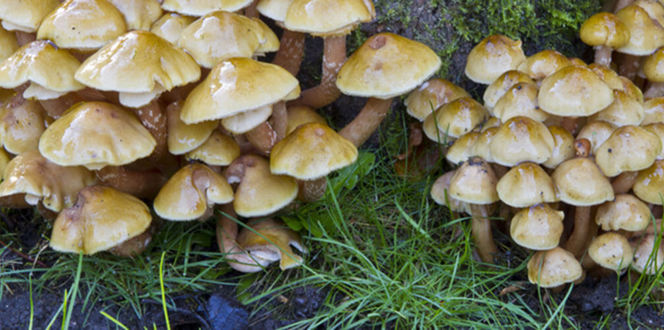Northern Tooth Fungus Description:
Northern tooth fungus grows on living, deciduous trees. The fungus grows in shelves of fruiting bodies that overlap in clusters. If broken open, the mushroom is very sappy inside and has “teeth” that contain reproductive spores. The teeth are thin, hanging spines that range from .5 to 2cm long. The mushroom is a creamy white color, that eventually turns yellow and brown with age. The cap itself can grow to 30cm wide and 2.5-5cm thick.
Hosts:
This mushroom is parasitic on living trees, and commonly grows on maples and beech trees.
Biology & Symptoms:
Northern tooth fungus is a parasitic fungus that attacks the heartwood of living trees. This could cause a tree’s structural stability to be compromised. The fruiting bodies typically appear in late summer to fall and can grow anywhere on the tree where a wound was made for entry. The teeth found on the bottom of the fruiting bodies create a greater surface area, which allows for ample room for spore production.
Management:
While this mushroom can be visually interesting, it is a parasite and can cause serious damage to trees. If damage is severe, trees can become dangerously susceptible to breaking and falling. Trees at an advanced stage of infection should be removed. Try to optimize tree health through cultural practices such as proper fertilization, mulching, and pruning methods.
Consult your local arborist if you think your tree may be infected by this fungus.





